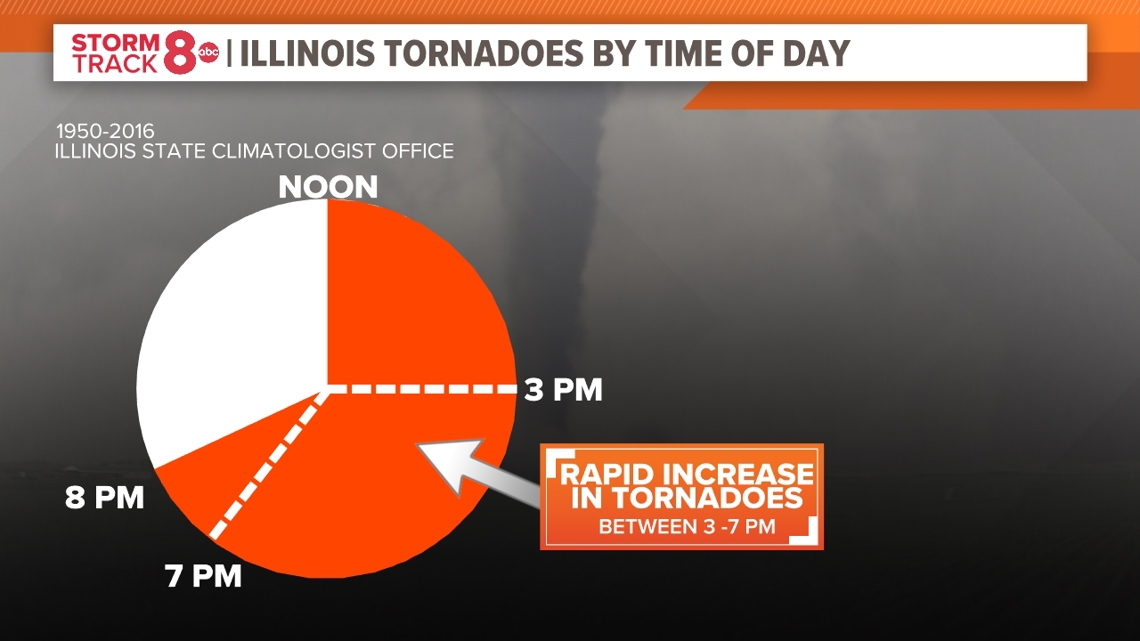MOLINE, Ill. — We're entering the busiest time of the year for severe weather, including tornado outbreaks all across the United States. While tornadoes have no specific season they favor, we do know that spring can be a particularly active time of year. Dave from Bettendorf, Iowa, wondered why it seems most tornadoes develop during the afternoon and evening as opposed to overnight and early in the morning. It's a great question and there is indeed a reason why. Let's dig in!
Storms crave heat
No surprise here as you often hear us talking about "daytime heating" needed for storms to develop. Heat is after all the energy that storms crave to get going and become quite strong. The more heating we see on the ground during the day, the stronger storms are likely going to be once they develop.
The Illinois State Climatologist Office has some fantastic statistics on Illinois tornado data, including right down to the time. Looking back at data from 1950 up until 2016, the bulk of tornadoes occurred between noon and 8 pm.


Also, take note that the data showed a particular increase in the number of tornado touchdowns occurring between 3-7 pm. It's not surprising since that's typically the warmest part of the day when our daily high temperatures are observed and the incoming energy from the sun is maximized.
Morning and nighttime tornado ingredients
Late-night and early-morning tornadoes typically need a different mechanism to get going versus daytime tornadoes. That mechanism often involves what we call a low-level jet. This strong jet stream, not that far above the ground, can not only transport heat energy but it can also transport a favorable wind pattern, allowing storms to spin and utilize whatever energy may be leftover from earlier in the day.
Tornadoes at night are much more dangerous since you can't easily see them. It takes lots of lighting to illuminate tornadoes after dark.
In 2008, Walker Ashley of Northern Illinois University published a study that looked at data from 48,000 tornadoes between 1950 and 2005. Research found that 27.3% of the tornadoes occurred at night between sunset and sunrise. Note though, that 2% of nighttime tornadoes were responsible for nearly 40% of tornado deaths and 42% of deadly tornadoes during the 55-year period. There is a link here!
Have a question that you would like me to answer for an upcoming Ask Andrew segment? Submit it, here!

